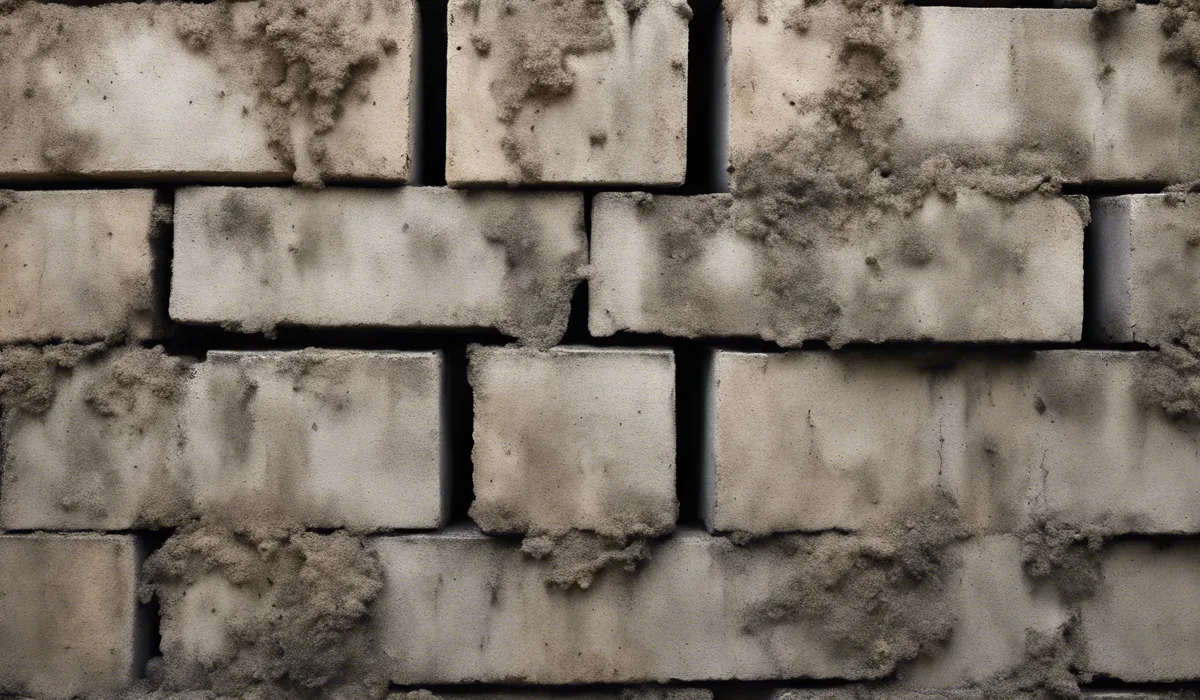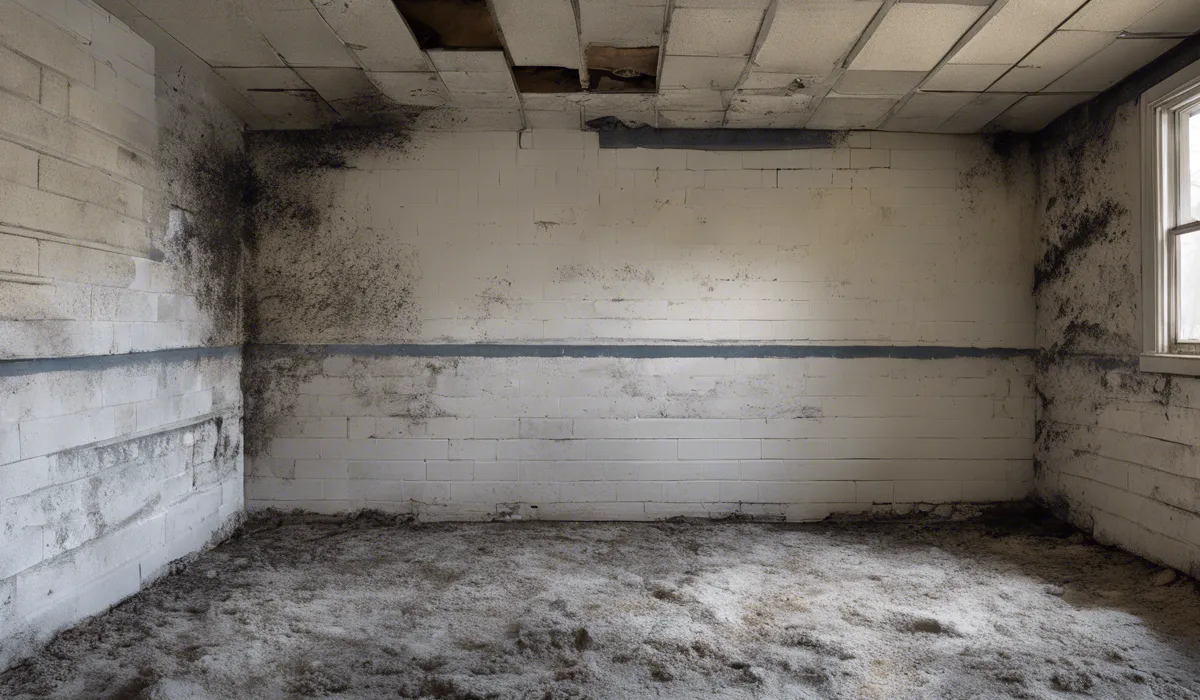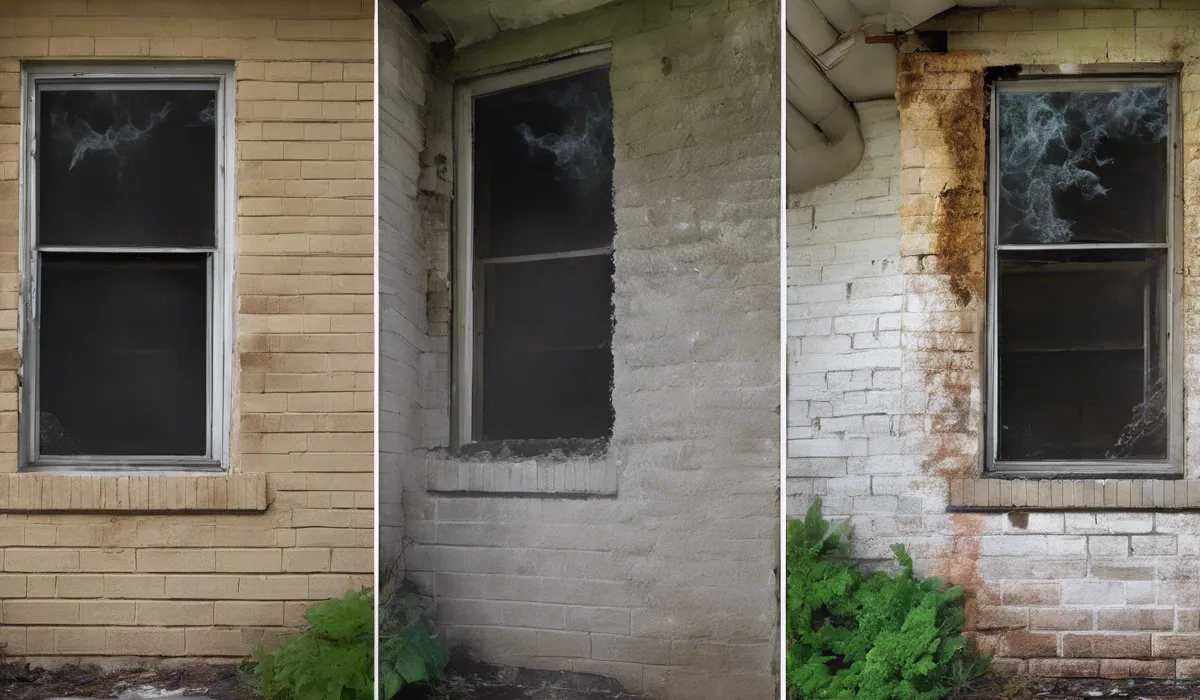To remove mold from cinder block, first brush off loose spores with a stiff brush. Clean the area with a mixture of water and bleach (1:10 ratio), applying it directly to the mold. Let it sit for 10 minutes, then scrub vigorously and rinse with water. Dry the surface thoroughly to prevent regrowth.
Identifying Mold on Cinder Blocks

Understanding Mold and Its Growth on Cinder Blocks
Mold is a type of fungus that thrives in damp, dark environments. Cinder blocks, being porous, can absorb moisture, providing an ideal breeding ground for mold.
The growth of mold on cinder blocks is not just a cosmetic issue; it can also weaken the structural integrity of a building over time.
Spotting Mold: Visual Characteristics
Mold on cinder blocks can appear as patches of black, green, or white. It often looks like a stain that spreads across the surface.
If you see any unusual discoloration on your cinder blocks, it’s crucial to inspect it closely as it may be mold.
Health Hazards Posed by Mold
Mold exposure can lead to health issues, especially for those with allergies or respiratory conditions.
Symptoms can include coughing, sneezing, and irritation of the eyes, nose, and throat. In severe cases, mold can cause serious lung infections.
The Urgency of Mold Remediation
It’s not enough to know what mold looks like — you must act quickly to remove it.
If left unchecked, mold can spread rapidly, leading to greater health risks and more extensive damage to your property.
Preparing for Mold Removal

Safety First: Precautions and PPE
Before tackling mold, ensure you’re protected. Wear gloves, goggles, and a mask or respirator to prevent mold spore inhalation.
Long sleeves and pants can protect your skin from harsh cleaning chemicals.
Airing Out: Ventilating the Space
Good ventilation is essential when working with bleach or other cleaning agents.
Open windows and doors, and use fans to keep the air circulating, which helps to clear out mold spores and fumes from cleaning products.
Gathering Your Arsenal: Supplies and Equipment
You’ll need a stiff brush, bleach, water, buckets, and rags or sponges. Optionally, a commercial mold removal product can be used. Ensure you have everything on hand before starting the cleaning process.
Initial Cleaning: Removing Loose Debris
Begin by sweeping or vacuuming the area to remove any loose dust or debris. This will prevent the spread of mold spores when you start the wet cleaning process.
Step-by-Step Mold Removal Process

Mixing Your Mold-Killing Solutions
For a natural approach, mix vinegar or baking soda with water. For tougher mold, use a mixture of bleach and water at a 1:10 ratio.
Always follow the instructions on chemical cleaners if you opt for a commercial product.
Applying Cleaners: Techniques and Tips
Apply your chosen cleaner directly onto the moldy areas. For bleach solutions, let it sit for at least 10 minutes to penetrate and kill the mold at its roots.
Scrubbing Away the Mold
After the cleaner has set, use a stiff brush to scrub the mold off vigorously. The goal is to remove all traces of mold from the cinder block surface, reaching into the pores where mold likes to hide.
Rinsing and Drying: Final Steps
Once you’ve scrubbed the area clean, rinse thoroughly with water to remove any residual cleaner and loosened mold.
Dry the surface completely to prevent any remaining moisture from allowing mold to regrow.
Preventing Future Mold Growth
To keep mold at bay, address any moisture issues such as leaks or dampness. Use dehumidifiers or improve ventilation in the area.
Regularly check and clean the cinder block surfaces to catch any new mold growth early.
Remember, when working on your home projects, like installing a ceiling box, always be mindful of potential mold issues, especially in areas prone to dampness.
Similarly, if you’re working in your bathroom, you might also be interested in learning about the right toilet flange size.
And for outdoor enthusiasts planning a trip, knowing the appropriate gear size, such as the right size binoculars for an Alaska cruise or for birding, can enhance your experience.
Lastly, fishers should consider the optimal 2500 reel size for a successful catch. Addressing these needs can help ensure a comfortable and healthy living environment or a successful outdoor adventure.
FAQs About Removing Mold from Cinder Block
What materials do I need to remove mold from cinder blocks?
You will need a stiff brush, a mixture of water and bleach (1:10 ratio), gloves, and protective eyewear to remove mold from cinder blocks.
How do I prepare the cleaning solution for mold removal on cinder blocks?
Mix water and bleach in a 1:10 ratio to create the cleaning solution for mold removal on cinder blocks.
Can I just brush off the mold from cinder blocks without using bleach?
Brushing can remove loose spores, but using a bleach solution is recommended to kill the mold and prevent regrowth.
How long should the bleach solution sit on the cinder block before scrubbing?
Let the bleach solution sit on the moldy cinder block for 10 minutes before scrubbing.
What is the final step after cleaning mold off cinder blocks?
After cleaning and rinsing the cinder block, it is essential to dry the surface thoroughly to prevent mold regrowth.
Final Thoughts
Effectively removing mold from cinder block involves brushing off loose spores, cleaning with a bleach and water solution, and thorough scrubbing.
It’s crucial to let the solution sit before scrubbing and to rinse and dry the area after treatment to prevent future mold growth.
